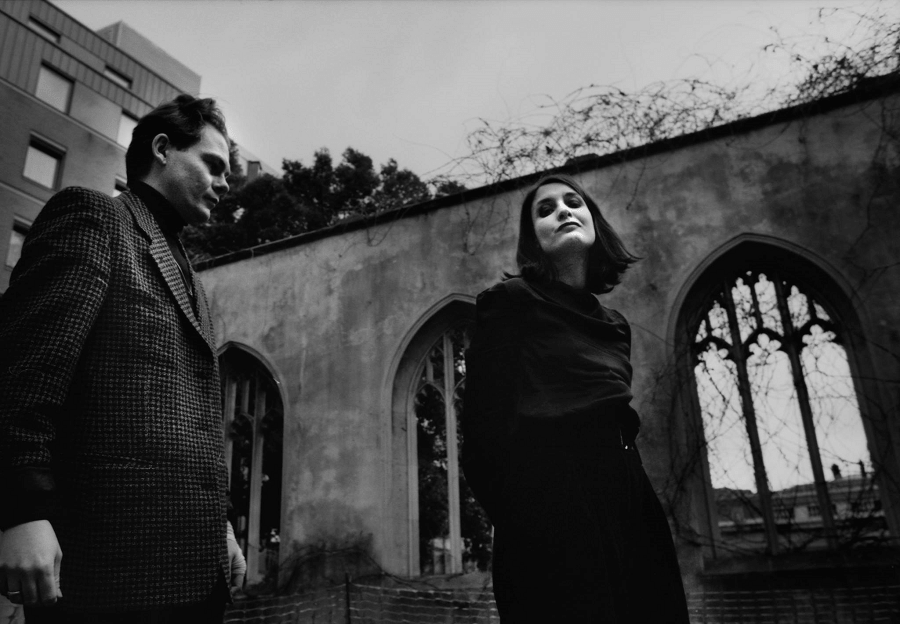Ian Anderson about his new album, his favorite Jethro Tull and solo works, views on pandemic situation, current plans and much more as well
Ian Anderson is a certain legend, a leader and founder of Jethro Tull—the band that played one of the most serious roles in the history of rock music. It’s hard to imagine, but the story of Jethro Tull covers now more than 50 years.
Jethro Tull was formed in 1967 in Blackpool, England by Ian Anderson and his mates. The first album “This Was” helped the band to get noticed as a fast developing and promising collective on the British rock-scene. Second album “Stand Up” which can be musically characterized as a perfect example of a folk-tinged electric blues brought to Jethro Tull big recognition and massive commercial success—it went number one in U.K. charts. Right from the early days Jethro Tull had a unique musical approach of bringing into a rock-band setup such a classical instrument as a flute that shaped their sound and kept them aside from all other bands. According to Ian Anderson words, the main reason he started to use flute was that he didn’t want to be just another third-rate guitar player who sounded like a bunch of other third-rate guitar players. He wanted to do something that was a bit more idiosyncratic, hence the switch to another instrument. When Jethro Tull began, he was playing the flute for about two weeks. It was a quick learning curve, every night he walked onstage was a flute lesson
In the beginning of the ‘70s Jethro Tull changed their musical style much and moved more to progressive rock. The first album that marked this new musical period was “Aqualung”, which was followed by such cult and classical for all Jethro Tull lovers albums as “Thick as a Brick”, “Passion Play”, “Too Old to Rock-n-Roll: Too Young to Die”. All these works followed a heavy ‘70s trend of conceptual albums—they had a backbone of an idea and coherent story.
At the edge of 70th Jethro Tull continued to experiment with different musical directions and moved to folk-rock with putting out three such important songs for this musical genre albums as “Songs from the Wood”, “Heavy Horses”, “Stormwatch”.
Beginning of the ‘80s started with the emerging Ian Anderson interest in synthesizers and new electronic sound which was a sign of the time for the musical industry at that moment. This period was based on such heavily electronic Jethro Tull albums as “A”, “The Broadsword and the Beast”, “Under Wraps”. Between these works Ian managed to release his first solo album “Walk into Light” which was the continuing testing of the territory of electronic sound and abilities of synthesizers.
At the edge of the 80s/beginning of the 90s Jethro Tull turned to rough hard rock sound and gave to this musical genre such powerful albums as “Crest of a Knave”, “Rock Island”, “Catfish Rising”. This works got a high recognition from critics and audience and even an anecdote situation happened when Jethro Tull received Grammy Awards for best hard rock/metal performance for the album “Crest of a Knave” with which they even beaten the all-time heavy metal classical album “And Justice for All” by Metallica, but the band didn’t showed up at the ceremony for receiving awards because their manager told them there is no chance for winning.
Starting from the middle of 90s till the end of century Ian Anderson got really interested in world music and ethnic direction and released two Jethro Tull albums in this genre—“Roots to Branches” and “J-Tull Dot Com”. In 2003 Jethro Tull released the last ever studio album called “The Jethro Tull Christmas Album”. Starting from that moment Ian Anderson organized a new band that is usually touring under the name Ian Anderson Touring Band or Jethro Tull by Ian Anderson. In this new era, he pitted up two remarkable albums, one of them was a follow up to one the most known Jethro Tull albums of the 70s “Thick as Brick”—“Thick as a Brick 2” in 2012. In 2014 the world saw another Ian Anderson album “Homo Erraticus”. The new album is planned to be released this September.
We had a lucky chance to talk with Ian Andersen, who’s spending quarantine days at his country house in England—about his favorite Jethro Tull albums and solo works as well, his views on the coronavirus situation, current plans and other interesting things.
Interview: Dmitry Tolkunov
Ian, first of all, thank you very much for finding time for this interview, it is a really big honour. Will be great to know what you are working on now. You had a new album planned to be released in September, is it going to be released in time?
The current situation brings so many difficulties it is impossible to predict either the recording progress or a physical release date. Add to that the problems with touring and travel so it may take many months to see a way forward.
Can you tell please a bit about the new album?
Yes, I can—but I won’t! I have always reserved the right to change my mind about titles and songs—even at the last minute—so it is not a good idea to talk about details yet.
As I understand the new album is made with your current line-up which is usually labelled as Ian Anderson Touring Band or Jethro Tull by Ian Andersen. Any thoughts for the future about some reunion album or a tour with an original line up like the original Jethro Tull?
A reunion? You mean of 27 Jethro Tull members? Of course not, since some are no longer alive or not feeling very well. I think you probably mean with Martin Barre. But he has his own life, band and plans—so that won’t happen. And imagine my having to tell some of the current band members that they are not required and have to be replaced by previous players. I can only be loyal to one group of musicians at a time!
Jethro Tull is known for a few one of the greatest conceptual albums in rock history, albums with a backbone of ideas and a coherent story. In 2012 you made a follow up to the 1972 album “Thick as a Brick”. Did you ever thought about a possibility of doing sequels for some other well-known Jethro Tull albums, maybe like “A Passion Play”, “Too old to Rock’n’Roll; Too Young to Die”?
Yes. I have thought about it, in the same way as I think about other creative things and options. But the decision is no. The limited time I have ahead of me in my life is more rewardingly spent doing something new as far as writing and recording goes. The live concerts offer plenty of opportunity to revisit older repertoire and that is quite enough nostalgia for me!
Jethro Tull is a band with such a long impressive history, and it always moved forward with experimenting with different musical styles. Do you have a favourite period in the rich band’s history?
The second album “Stand Up” was an important step in moving from an imitative blues style to more original material. And then “Aqualung”, of course, which helped my songwriting and acoustic guitar-based music. “Thick As A Brick” was a big step into the world of Prog Rock, although I think we had been playing “progressive rock” since 1969 anyway. “Songs From The Wood” was probably the highlight of the latter ‘70s line-up when all the band offered up more creative input into some of the songs.
Why was the band named after English agriculturist of the 17th century? Has agriculture ever been your serious life interest?
Our agent gave us the name back in January 1968. It wasn’t my idea and I had ever heard of Jethro Tull, the historical character, as I didn’t study that period of history at school. It is perhaps just coincidence that I became involved in farming and aquaculture later in life. I have always liked the outdoors and the natural world. And I have had an interest in conservation and ecology since I was in my early twenties.
If to talk about your works as a solo artist, besides Jethro Tull—what are the best works that you have ever made in your perception?
I have tried over the years to make a few solo albums using musical ideas that didn’t fit so well with the Jethro Tull musical identity as I see it. Acoustic, experimental electronic, classical-inspired themes and orchestral music. Jethro Tull had two Billboard chart number ones and I have had two Billboard number ones as a solo artist with crossover classical and string quartet works.
Besides Jethro Tull and your solo works you have an impressive portfolio of collaborations with other artists for whom you played flute. Any plans in this field or maybe some great collaborations that just happened recently?
I am a loner. I am Clint Eastwood in the spaghetti westerns. I am Rudyard Kipling’s The Cat That Walked by Himself. I tend to travel alone, eat alone and sleep alone. I write music and record alone, too, whenever possible. Collaborations with other musicians are like a one-night stand for me. Love ’em and leave ’em. Except for my Christmas concerts with Marc Almond and Lloyd Grossman. At Christmas I extend the hand of friendship and camaraderie to anyone who will buy me lunch.
How do you spend most of your days now? Did this pandemic situation affect your lifestyle or is it not so noticeable while you are living in the countryside?
In principle the same as everyone else. Reawakening old hobbies and pastimes, reading and, of course, the usual office work since I work from my home office every day. But the big difference is that I am not stuck on the 24th floor of a high-rise apartment block in the middle of a big city. I live in the countryside with fields, woods and fresh air as I have for 45 years. First thing I did when I had some surplus cash in the mid ‘70s was to buy a country home with some land around it. I understand that most people like to live in the city with restaurants, clubs, theatres and lots of friends close by. But the cat who walks by himself likes to be awake to see the first light of dawn and smell the scent of wildflowers and grasses.
What are your general thoughts and feelings about these strange coronavirus days that humanity is passing through?
Gaia’s revenge! Sir James Lovelock’s fanciful books many years ago likened the planet to a living creature. A living being that comprises all life upon it and might self-regulate to survive if necessary. I don’t agree with the whole proposition in detail, but it has some appealing elements of interconnectivity which explain, perhaps, the current global situation. Too many people, finite resources, greed, irresponsible consumption producing climate change, forced migration, famine, flood and more to come. Global pandemics have been forecasted for many years. And the immoral consumption of exotic wild animal meat for human food, slaughtered and prepared in horrific and unhygienic circumstances are probably to blame for this pandemic.
I have become progressively more vegetarian over the years and eat little or no meat if I can avoid it. Our disdain and disregard as a human species for animal rights and welfare are to blame. But the interconnectivity I mentioned begins and ends with population growth. I believe in responsible family planning. Does anyone really need more than one or two children? Each child born will, over its lifetime, produce more than 400 tonnes of carbon in our “civilised” western world. In many cases the lifetime carbon footprint might well be double or triple that amount.
Just think—in my lifetime alone, the planetary population has increased by slightly more than three times. My parents’ and my generations are responsible for more than half of the mess we are in right now. My grandchildren will be the ones to inherit this ongoing environmental and humanitarian disaster.
Do you think a list of things that you want to get finished after life will get to normal?
My ongoing quest to find the worst Indian restaurant in the towns I visit to perform in. I have got close, but I would like to keep trying. In the meantime, I hope we can continue with our tree planting plans for this September to plan another 10,000 hardwood species here on the farm in addition to the 30,000 planted over the last years. And, of course, to walk by myself the empty streets of a strange city in the early hours of morning. Just like the cat….
Sounds like a plan. Thank you very much for the interesting conversation, Ian.
Thank you












